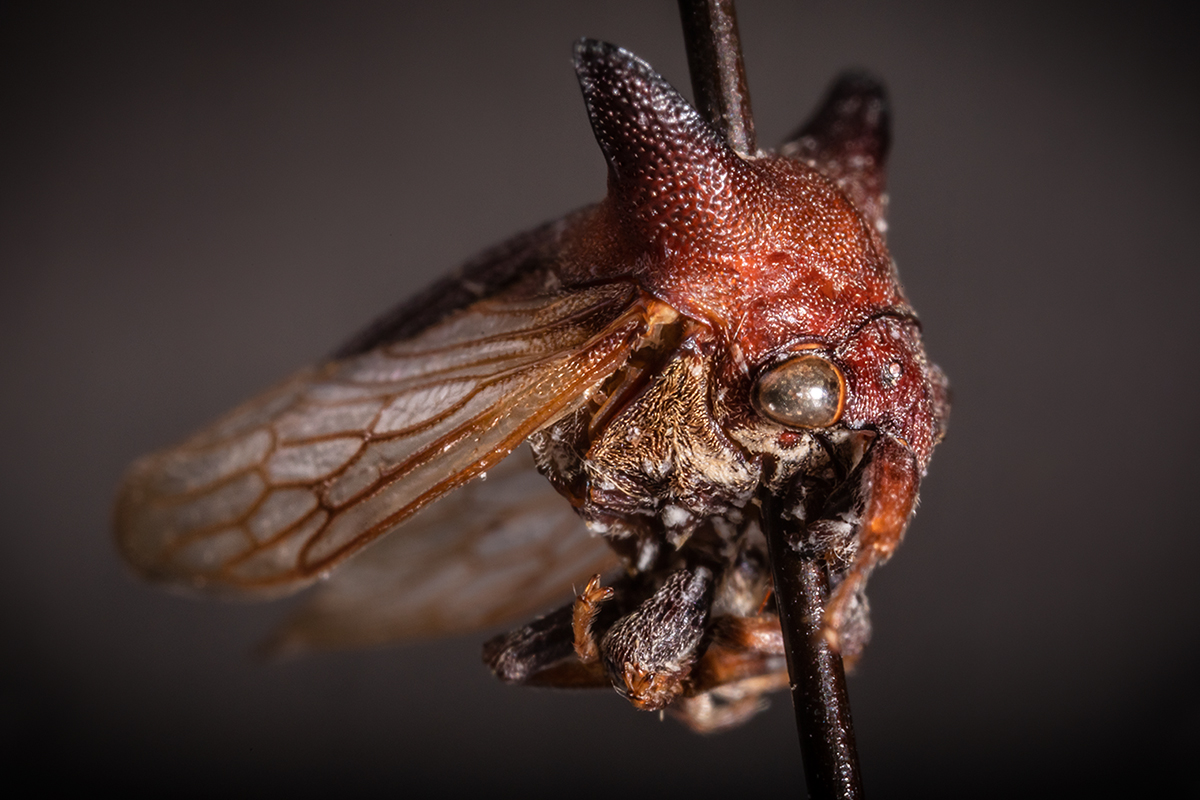Molecular Phylogeny of Membracoidea (Insecta: Hemiptera): A Test of Alternative Evolutionary Scenarios. NSF Systematic Biology Program. DEB-9726282.
C. H. Dietrich and B. M. Wiegmann, Co-PIs.

Testing theories concerning the evolutionary processes which govern ecological and behavioral influences on survival, diversification and proliferation of species and clades requires an established phylogenetic framework. Studies of ecology and behavior have led to important insights and hypotheses concerning the adaptive value of particular traits, but the estimation of phylogenetic relationships based on morphological and molecular data still lags well behind the development of process theories, especially in diverse invertebrate taxa such as insects. The hemipterous superfamily Membracoidea ( leafhoppers and treehoppers) is of particular interest in this regard, because it is the most diverse and successful lineage of sap-sucking phytophagous insects, and because of the great variety of behavioral and life-history strategies found within this group. Lack of phylogenetic perspective has hindered attempts to understand the evolutionary origins of various ecological and behavioral characteristics, such as anointing behavior (unique to this group of insects), ant-mutualism, subsociality, and host-plant and habitat relationships, and to explore the possible roles that the acquisition (or loss) of such traits played in membracoid diversification. Conflicts among the few morphology-based phylogenetic hypotheses proposed by different authors for Membracoidea have not yet been resolved.
This project will provide increased resolution of the phylogenetic relationships among membracoid family-group taxa by adding characters from nuclear ribosomal and protein-coding gene sequences for a large sample (100+ species) of representative taxa of Membracoidea and outgroups. The project is a collaborative effort by workers at the Illinois Natural History Survey (INHS) and North Carolina State University (NCSU) who have, hitherto, separately pursued similar goals. PI Dietrich at INHS has performed extensive morphology-based analyses of membracoid higher taxa and has compiled the sequences of two fragments of the 28S nuclear ribosomal gene (comprising divergent domains D2, D6, and D7) for over 40 taxa. Co-PI Wiegmann, student Cryan, and consultant Deitz at NCSU have generated a sizeable preliminary dataset for a 600 bp fragment of the single-copy nuclear elongation factor 1-a gene for membracoid species. Together, these datasets include over 400 characters potentially informative at the family-group level which, based on the fossil record of Membracoidea, comprises divergences that occurred between the lower Cretaceous and the early Tertiary.
Specific objectives of the molecular phylogenetic study include: (1) a test of the proposed status of leafhoppers (Cicadellidae) and treehoppers (Melizoderidae + Aetalionidae + Membracidae) as monophyletic sister groups; and, (2) elucidation of detailed relationships among the subfamilies of Cicadellidae and Membracidae. These studies will enable us to test hypotheses of evolutionary process within a robust phylogenetic framework, including: (1) Did the initial divergence of treehoppers coincide with a shift in life history strategy—loss of jumping ability and acquisition of a sessile, cryptic juvenile stage—or is this strategy a retained plesiomorphy, homologous to that of other Cicadomorpha?; (2) Did treehoppers arise prior to the break-up of Gondwana, as implied by one morphology-based cladistic analysis; or did this lineage arise in South America after the isolation of that continent, as implied by the absence of treehoppers from the pre-Tertiary fossil record?; (3) Did shifts in habitat, host, and/or feeding strategy promote the diversification of certain membracoid clades?; and, (4) Did the acquisition of ant-mutualistic and presocial behaviors occur separately in multiple membracoid lineages or are these traits relatively conservative phylogenetically?
Besides its value in elucidating factors that contributed to the diversification of one of the largest groups of phytophagous insects, this study will augment efforts, currently underway, to revise the higher classification of Membracoidea on a worldwide basis, and provide much-needed sequence information for regions of the genome that contain characters informative at intermediate levels of divergence among arthropod taxa.
See a preliminary phylogeny of Membracoidea based on 28S rDNA sequences: Membracidae-phylogeny2017

